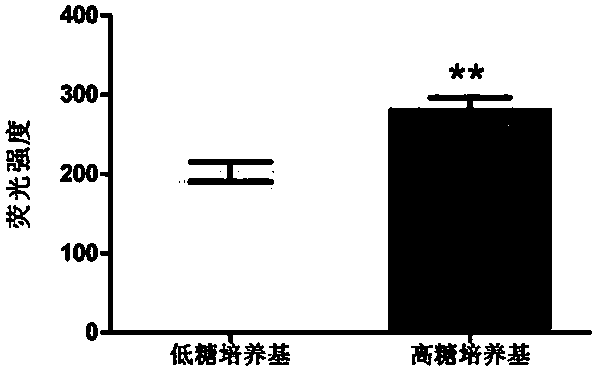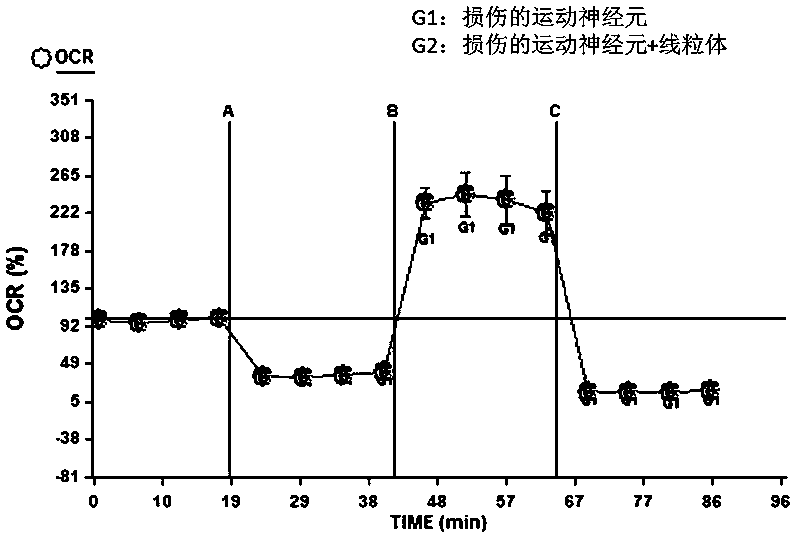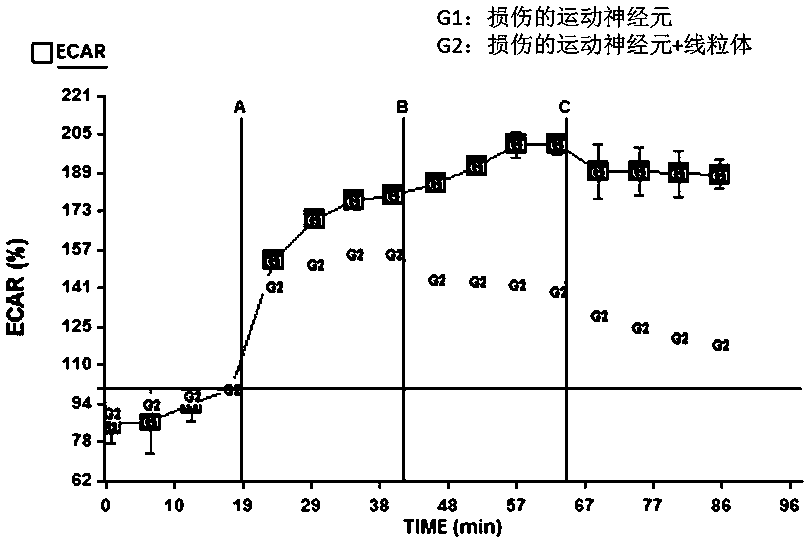A Mitochondria Isolation Method Suitable for Stem Cells
A separation method and mitochondrial technology, which are applied in the field of stem cell-based biotechnology, can solve the problems of stem cells with few mitochondria and immature extraction methods, and achieve the effects of simple method, good activity and high purity.
- Summary
- Abstract
- Description
- Claims
- Application Information
AI Technical Summary
Problems solved by technology
Method used
Image
Examples
Embodiment 1
[0032] Example 1: Isolation of mitochondria derived from bone marrow mesenchymal stem cells.
[0033] Using the method of this example to isolate bone marrow-derived mesenchymal stem cells specifically includes the following steps:
[0034] 1) subculture amplification (P 1 -P 3 Bone marrow mesenchymal stem cells (BMSCs) were identified by flow cytometry, and their ability to differentiate into bone, cartilage and fat was identified.
[0035] 2) 2×10 7 (BMSCs), digested with 0.25% trypsin, centrifuged at 850g, 5min to collect the cells; resuspended with PBS, washed and centrifuged twice.
[0036] 3) Using the Mitochondria Isolation Kit (Mitochondria Isolation Kit, #89874, ThermoFisher Scientific), according to the operation manual, count the number of cells to determine the amount of mitochondrial extract to be prepared. Prepare mitochondrial extract solution on ice: Solution A is the lysis solution, and solution C is the termination reaction solution. Just before use, add...
Embodiment 2
[0040] Example 2: Determination of mitochondrial generation (mitochondria mass) of BMSCs cultured in vitro.
[0041] 1×10 4 BMSCs mitochondria were planted in 96-well plates (Corning) with a black bottom. A group of cells (n=42) were cultured in DMEM with 10% FBS and low glucose for 48h. Another group of cells (n=42) was cultured with 10% FBS high glucose DMEM for 48h. 200 nM MitoTrack red (Invitrogen) was then added to the medium for staining and labeling of mitochondria. First at 37°C, 5% CO 2Stain in the cell culture box for 20 minutes, then drift PSB 3 times, 10 minutes each time, and finally detect the red fluorescence intensity with a fluorescent microplate reader. The fluorescence intensity of BMSCs cultured in high-glucose medium for 48 hours was 281.3±15.03, which was significantly higher than that of BMSCs in low-glucose medium (202.7±12.37), indicating that high-glucose treatment significantly increased the generation of mitochondria.
Embodiment 3
[0042] Example 3: Determination of mitochondrial ATP content.
[0043] Using Biyuntian ATP assay kit, equilibrate the ATP assay reagent to room temperature, take 100 μl and add it to a 96-well black bottom transparent plate, then add 10 μl of freshly extracted mitochondria, shake for 30 s, let stand for 5 minutes, and immediately use the machine (Glomaxtm96MicroplateLuminometer) Determination. Quantitative determination of mitochondrial protein was performed according to the steps in the instructions of the BCA protein quantification kit. Prepare protein standards and draw a standard curve. Mix liquid A and liquid B in the kit at a ratio of 50:1, add the sample to be tested, add 2 μl of the sample to be tested, add 18 μl of PBS, and then add 200 μl of BCA incubation solution, and mix well. 37°C metal bath for 30min. Use a microplate reader with a wavelength of 562nm to measure the absorbance value of each well, and then calculate the protein concentration of the sample. Th...
PUM
 Login to View More
Login to View More Abstract
Description
Claims
Application Information
 Login to View More
Login to View More - R&D
- Intellectual Property
- Life Sciences
- Materials
- Tech Scout
- Unparalleled Data Quality
- Higher Quality Content
- 60% Fewer Hallucinations
Browse by: Latest US Patents, China's latest patents, Technical Efficacy Thesaurus, Application Domain, Technology Topic, Popular Technical Reports.
© 2025 PatSnap. All rights reserved.Legal|Privacy policy|Modern Slavery Act Transparency Statement|Sitemap|About US| Contact US: help@patsnap.com



